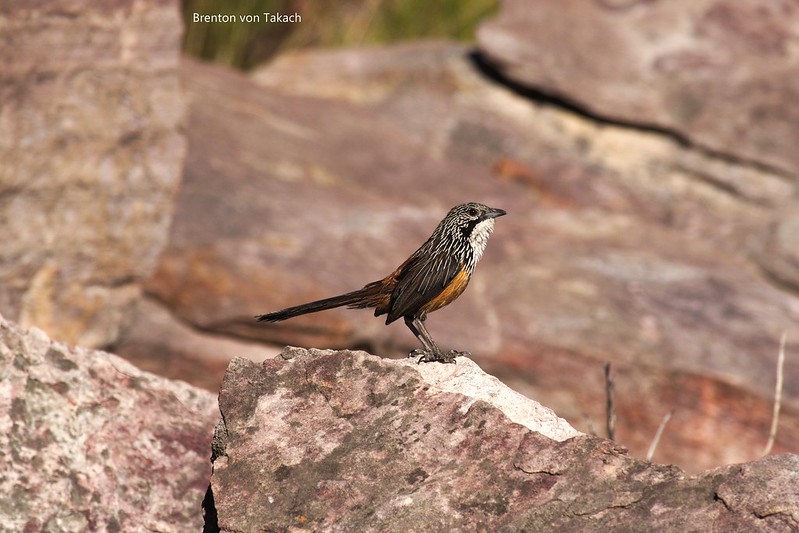Protecting the white-throated grasswren (Amytornis woodwardi)
Species of conservation concern can sometimes be difficult to survey for and adequately monitor, often due to their ranges being restricted and/or remotely located, or low occupancy across large landscapes. To make this problem more tractable, we can predict species habitat suitability or probability of occurrence across large spatial areas, based on relatively small numbers (e.g. dozens) of accurate occurrence points
Despite being largely undeveloped, northern Australia is being degraded by a variety of anthropogenic factors, including feral herbivores, feral cats, and frequent high-intensity fires. One species in the region about which we know very little is the white-throated grasswren (Amytornis woodwardi), a ground-dwelling bird with a restricted distribution.
Led by Dr Kelly Dixon, from Territory Natural Resource Management, this project is working closely with Traditional Owners, Indigenous ranger groups, Kakadu National Park and scientists to conduct targeted surveys, habitat assessments and surveys for feral cats to inform management actions for the white-throated grasswren.
Targeted survey results will inform planning for strategic fire management by Indigenous ranger groups to protect white-throated grasswren habitat by creating larger patches of long-unburnt habitat in the Stone Country.
Check out the Territory NRM website for more information about the project.
Progress
Following initial consultation to plan survey sites, Jawoyn Rangers and Territory Natural Resource Management conducted surveys on Jawoyn Country in the Manyallaluk Aboriginal Land Trust (ALT) for the white-throated grasswren in August 2021.
Surveys are currently being undertaken in the Warddeken Indigenous Protected Area (IPA) in collaboration with Warddeken Land Management, following the same methodology employed on Jawoyn Country. Already, the results of the predictive habitat modelling are informing the fire management program in the Warddeken IPA in 2022, to protect long-unburnt patches of the Stone Country.
Further surveys are planned over the next 12 months in other areas of the Stone Country with various Indigenous Ranger groups and results from these will continue to help inform fire management planning. All surveys are carried out under appropriate animal ethics, Northern Territory Government and Northern Land council permits.
Selected publications
Dixon, K., von Takach, B., Hayward-Brown, B., Guymala, T., Warddeken Rangers, Jawoyn Rangers, Djurrubu Rangers, Mimal Rangers, Evans, J., Penton, K. (2024) Integrating western and Indigenous knowledge to identify habitat suitability and survey for the white-throated grasswren (Amytornis woodwardi) in the Arnhem Plateau, Northern Territory, Australia. Wildlife Research 00, 00–00.
